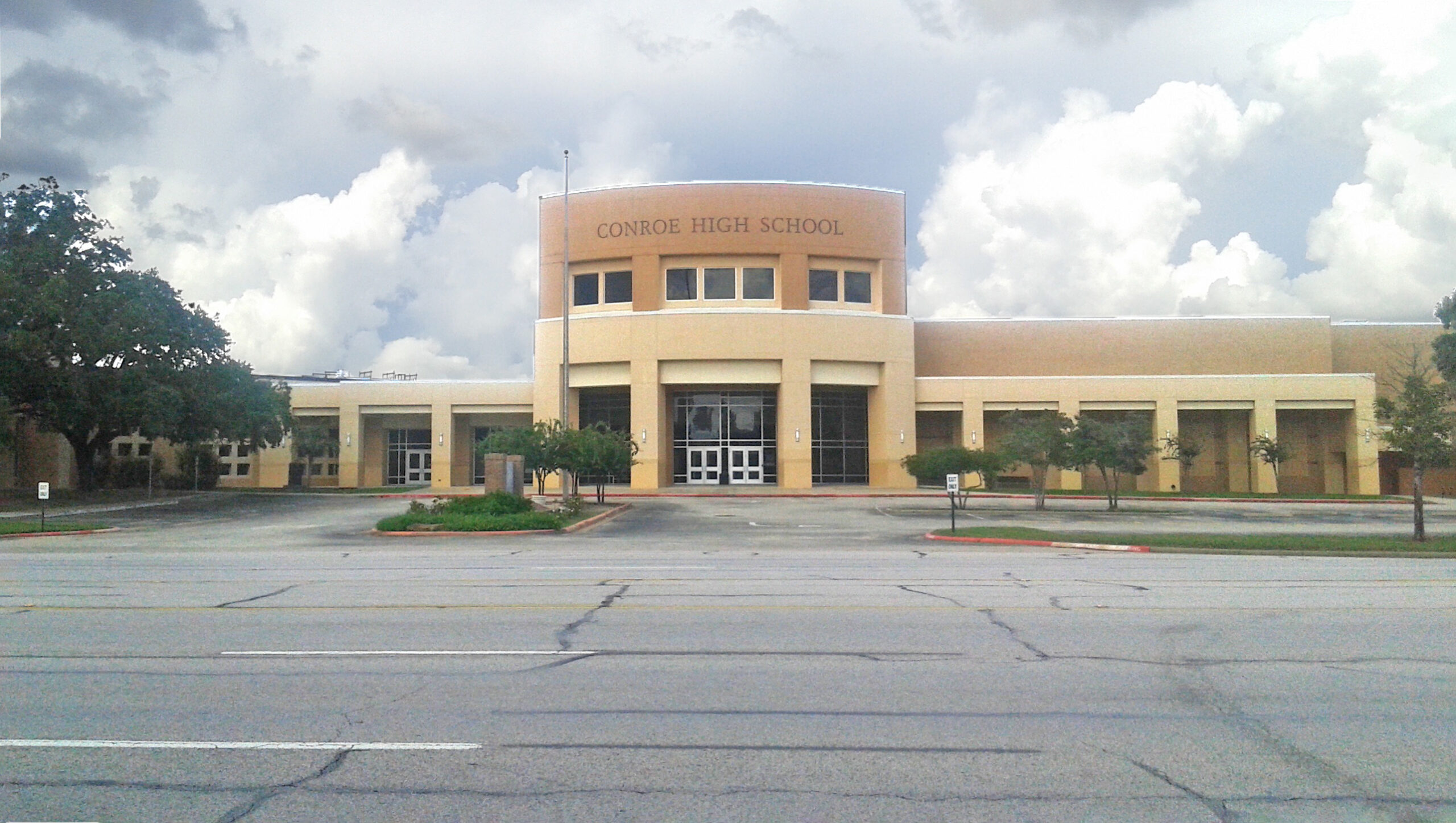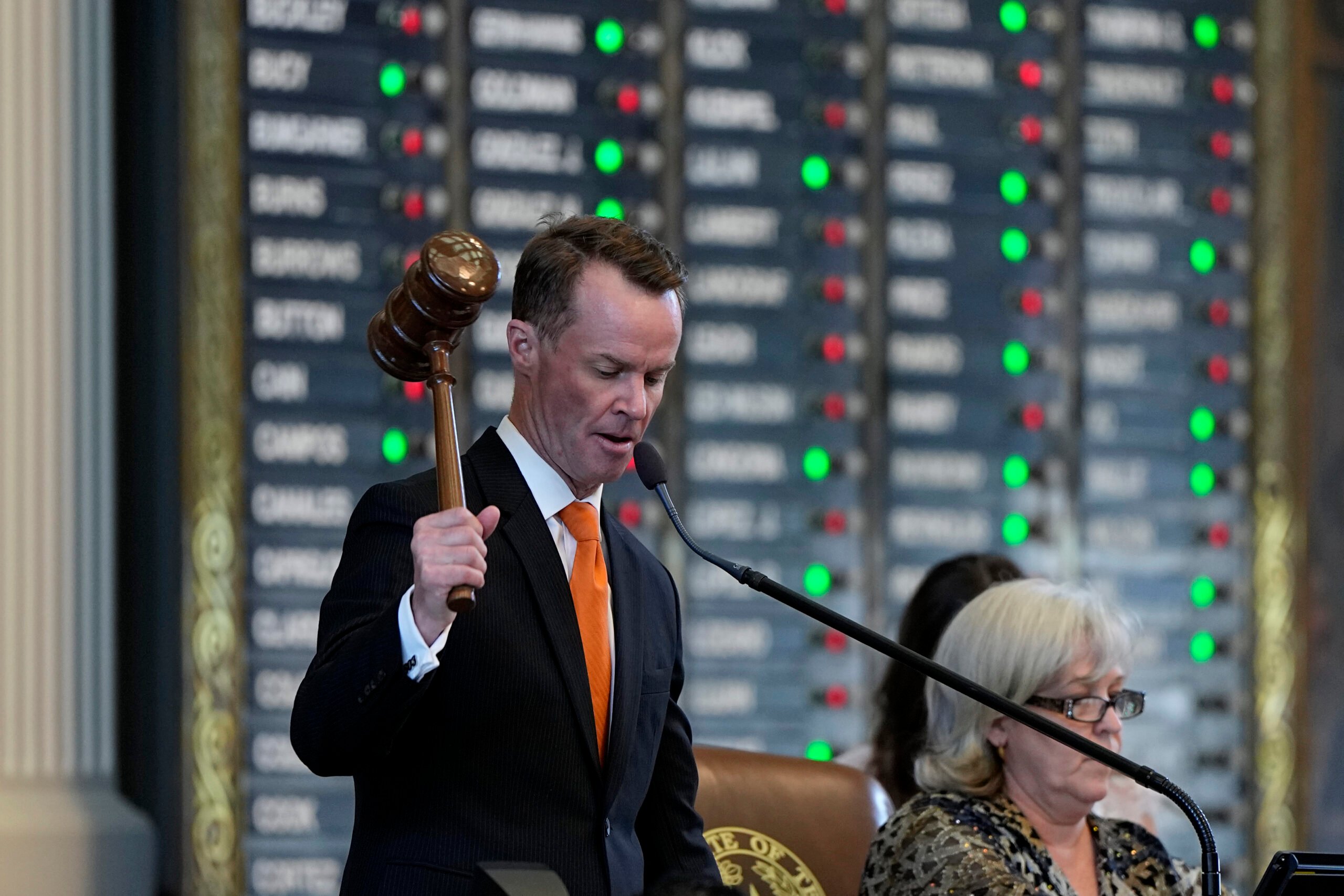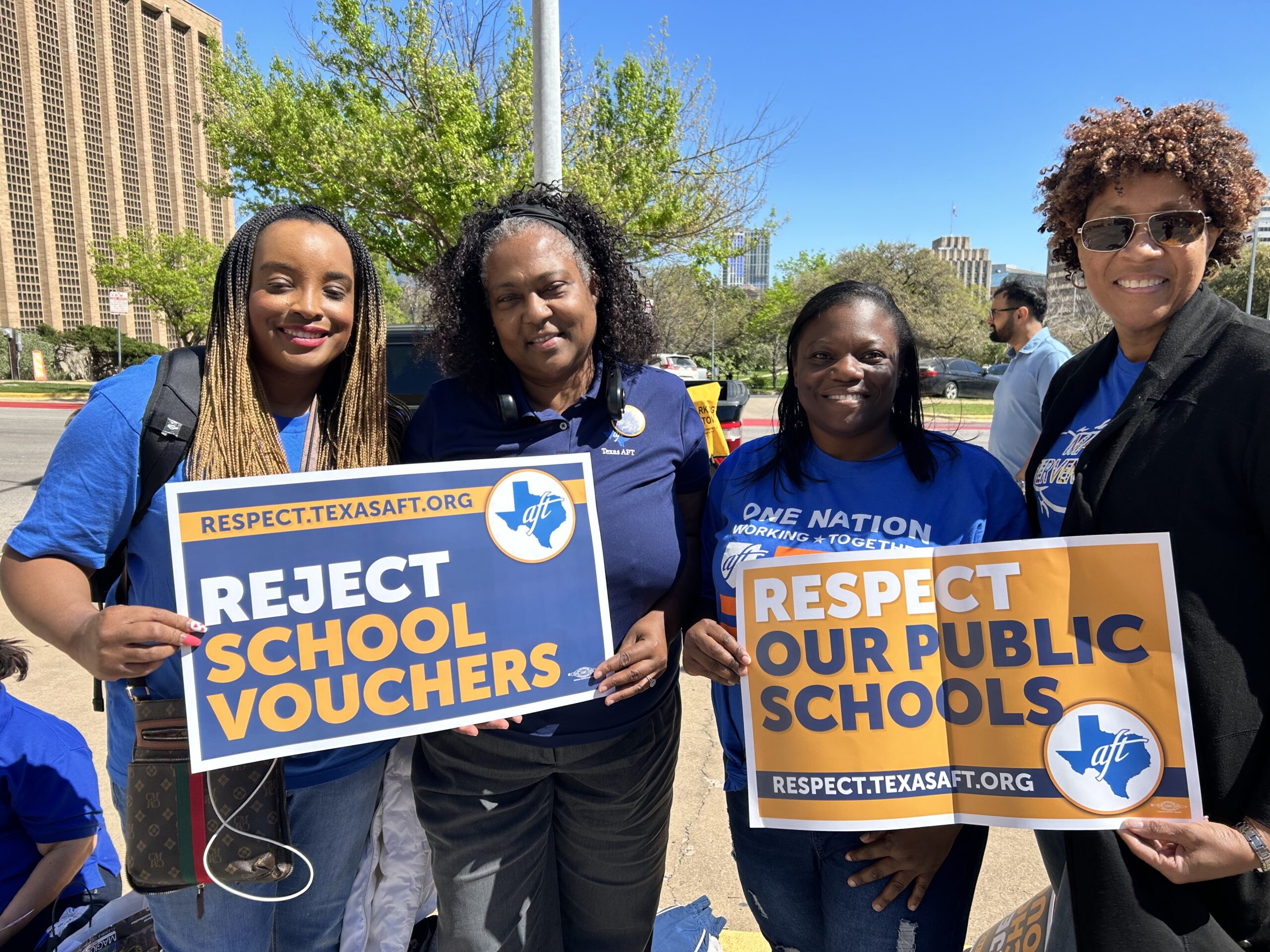
A ‘Dark Vision’ of Discipline: Zero Tolerance Makes a Comeback
Texas is already expelling more at-risk students and the Texas Legislature may make things worse.

Improving school safety is a top priority in Texas during this legislative session after last year’s deadly school shooting in Uvalde. But instead of making guns less accessible to children, for some GOP legislators the solution to ensuring school safety means tossing out any at-risk students, deemed to be disruptive or aggressive.
“Not all kids belong in the classroom anymore,” state Senator Charles Perry said during last December’s hearings of the Special Senate Committee to Protect All Texans, the group tasked with investigating and proposing measures to improve school safety.
One bill under consideration in the Senate’s education committee would allow teachers to remove and refuse a student reentry to the classroom based on only a single incident of behavior deemed “disruptive,” and interferes “with the teacher’s ability to communicate effectively with students.” Under the proposed law, instead of first receiving behavioral and academic support in school, the student could be placed in a disciplinary alternative education program or expelled. Perry is cosponsoring that bill, SB 245, along with senators Mayes Middleton and Drew Springer.
At that hearing, Perry claimed some kids “don’t want to be fixed.” Perry was referring specifically to 18-year-old Salvador Ramos’ history of depression and disengagement from school before shooting 19 students and two teachers at Robb Elementary School in Uvalde. Citing the lack of respect kids have for authority figures as a root cause of school violence, Perry suggested schools should “lock up the kids that show aggression in any way” and “monitor them with an ankle bracelet” so they wouldn’t be able to return.
In an interview with the Texas Observer, Perry said, “We have allowed students in different settings to come in and disrupt to the point that the teacher can’t teach and the other kids are suffering for it.”
A similar bill under consideration is HB 655, which would allow school administrators to label students as “habitually violent” for a wide range of actions never fully specified. It allows students to be removed from schools and placed in virtual instruction instead.
Texas legislators are pushing such get-tough reforms at a time when expulsions and suspensions have risen rapidly statewide, the Texas Observer found in an analysis of Texas Education Association data. Texas schools expelled 65 percent more students last school year than five years ago during the 2016-17 school year.
Public education advocates fear initiatives to expand exclusionary disciplinary measures and increase police presence could make things worse, especially since students have already been struggling due to the pandemic.
These school hardening proposals signal a possible return to zero-tolerance policies, popular back in the 1990s, which punish students by suspending or expelling students regardless of the seriousness of their behavior or context of their actions.
But zero tolerance is a practice which, experts and federal education and law enforcement agencies say, makes schools less safe.
Russell Skiba is a professor of school psychology, a member of the American Psychological Association’s Zero Tolerance Task Force, and an author of the U.S. Department of Education’s guidance on school safety, “Early Warning, Timely Response.” He criticizes some proposals under consideration in Texas as “hyper zero tolerance.”
“They’re seeking to impose their vision of discipline on schools and it’s a very harsh and dark vision that will in no way have a positive impact on kids. But it will likely make things worse and trap us into a cycle of coercion and violence.”
After the school shootings at Marjory Stoneman Douglas High School in Parkland, Florida in February 2018 and at Santa Fe High School in May 2018, Governor Greg Abbott issued a plan that would expand the list of noncriminal offenses for which a student may be expelled.
While that measure didn’t pass, the Texas Observer found that Texas schools have been expelling and suspending students in greater numbers ever since. Student expulsions increased by 34 percent from the 2016-17 school year to the 2018-19 school year. Expulsions for “terroristic threat” shot up by 66 percent during the same time period. Under the Texas Penal Code, students can be charged criminally with a “terroristic threat” for allegedly causing a person to fear physical harm regardless of if the student making the threat has the intent or capacity to carry it out.
The number of student expulsions temporarily dipped while students were in virtual instruction during the pandemic. But expulsions skyrocketed by 188 percent from 2,101 in the 2020-21 school year to 6,049 in the last school year. Out-of-school suspensions follow similar patterns.
Andrew Hairston directs the Education Justice Project at Texas Appleseed, which represents and advocates for students facing unjust and discriminatory exclusionary discipline. He points out that the recent increase in exclusionary discipline practices appear to disregard and likely worsen the pandemic’s terrible toll on kids.
“Young people have been through a pandemic. Some have had to work and support their family and care for their siblings. They’ve seen a million people die in the United States over the past three years. Just by virtue of this loss, there are ways it’s going to show up in their lives. Some may say something on social media that they shouldn’t, as kids will do from time to time. We should say ‘You shouldn’t have posted that,’ but not prosecute them and be punitive, and actually address the concerns in their lives and the complex human beings they are who are still developing,” Hairston said.
Texas laws already give schools broad discretion to suspend and expel students for a wide range of actions that are not criminal offenses. Last school year, more than half of student expulsions carried out by Texas schools were discretionary, and not mandatory expulsions.
Ninety percent of suspension and expulsion actions were for violations of a school code of conduct. By comparison, only 4.51 percent were for fighting and 2.84 percent for the possession and exchange of controlled substances. Suspensions and expulsions for all other reasons made up less than 2.89 percent of all disciplinary actions.
The crackdowns vary among Texas school districts. In the last school year alone, Conroe ISD expelled 304 students, the most of any district. In that district, 77 percent were expelled for discretionary reasons. In comparison, Santa Fe ISD, the site of the Texas’ 2018 school shooting, expelled just 18 students last year.
Following Conroe ISD with the highest number of expulsions were International Leadership of Texas, Ector County ISD, El Paso ISD, and Lamar County ISD.
Kevin Brown, executive director of the Texas Association of School Administrators, said his organization has been hearing reports from school administrators nationwide about an increase in disruptive behavior linked to hardships students suffered during the COVID-19 pandemic. “People are also more attentive to anything that would be a safety risk in a school and the expectations from everybody are heightened,” he said.
Zero-tolerance policies in schools grew out of the 1990s expansion of the federal “war on drugs.” Such policies increased after two students killed 12 students and a teacher at Columbine High School in 1999. But since the mid-2000s, the U.S. Department of Education and the Department of Justice have issued studies stating that zero-tolerance policies do not make schools safer, and instead discriminatorily criminalize and harm Black and Hispanic students, as well as students with disabilities.
Skiba, the education psychologist, said that Texas’s current proposals to further crack down on students resemble policies that were discredited in the years following the shooting at Columbine High School in Colorado in 1999. Years of research, he said, show that zero-tolerance policies are linked to poorer academic performance, higher dropout rates, and funnel kids into a juvenile justice system. “What these bills are doing is making a very clear choice to ignore 20 years of evidence on what works and to impose a rash regime that is ineffective” Skiba said.
The Texas Observer found evidence that Texas schools appear to discriminate in their recent disciplinary decisions. In the 2021-2022 school year, 20 percent of the students expelled from Texas schools were Black, even though Black students made up only 13 percent of the total school population. Another 63 percent of students expelled were Hispanic even though they made up only 53 percent of the total student population. Nearly all—79 percent of students expelled—had been identified as students at risk of failing, and 17 percent of students expelled were receiving special education services.
In 2014 under the Obama administration, the U.S. Department of Education and the Department of Justice issued a guiding document to schools to stop using zero-tolerance policies. (Trump rescinded the document in 2018, advocating for a return to zero tolerance; the policies are being reevaluated under Biden.)
Other federal law enforcement agencies like the FBI and the U.S. Secret Service have also warned schools against using zero-tolerance disciplinary policies as a school safety measure. In a 2018 document entitled “Enhancing School Safety Using a Threat Assessment Model,” the U.S. Secret Service cautioned schools that “There is no profile of a student attacker,” adding: “Removing a student from school does not eliminate the risk to the school community. Several school attacks have been carried out by former students who had been removed from the school or aged out of their former school. A suspended or expelled student might become isolated from positive peer interactions or supportive adult relationships at school.”
The same document adds that “positive, trusting relationship with an adult at school,” and “emotional connections to other students,” are “protective factors” which can prevent a student from engaging in harmful behavior. The document calls for resources such as “peer support programs or therapeutic counseling to enhance social learning or emotional competency, life skills classes, tutoring in specific academic subjects, or mental health care” to address a student’s behavioral concerns before they escalate.
Skiba compares the difference between using zero-tolerance policies and research-based proposals for positive behavioral supports for addressing student behavior to theories in parenting. The harsher the parent’s punishment, the more hostile the kid’s response will be. Zero-tolerance disciplinary measures, Skiba said, lead to a domino effect that can destabilize school environments, reinforce aggression, and potentially end in violence.
“It’s a very harsh and dark vision that will in no way have a positive impact on kids. It will likely … trap us into a cycle of coercion and violence.”
“If our schools move towards these kinds of hyper-coercive approaches and create a criminalizing atmosphere, the data shows that not only does this stuff not work, it can increase the likelihood of kids feeling resentful. When they get suspended, they hang out with other antisocial peers, and may come back and do more negative things in the classroom than they started out with.”
Other education advocates fear Texas’ other school hardening proposals, which include ramping up police presence in schools, could also destabilize school climates. Advocates with groups like Texas Appleseed and the Intercultural Development Research Association argue such measures can make students feel less safe and less likely to report concerning behavior from their peers.
Hairston of Texas Appleseed points out that “400 law enforcement officers from many various agencies did not prevent the shooting at Uvalde.”
Four types of school-based law enforcement programs already exist—a district police department, a district contract with a local law enforcement agency, a marshal program that allows school boards to appoint employees as armed marshals, and the Guardian Program which allows districts to grant permission to anyone to act as campus security personnel and carry firearms on campus.
The Texas School Safety Center provides resources and reviews district compliance with safety mandates. Its last audit from 2020 reveals that 41 percent of all Texas school districts used school resource officers from local law enforcement agencies, 32 percent of districts had their own police department, 27 percent used the Guardian Program, and 6 percent the marshal program.
The Texas legislature is currently considering proposals to expand law enforcement programs on campuses, including bills that encourage schools to recruit volunteers from outside of the school to serve as school-based militias or armed guards.
One bill, SB 737, filed by Senator Roland Gutierrez, who has also filed several gun control bills, would create the Texas School Patrol. The bill aims to put 10,000 state police officers in schools, amounting to one additional police officer on each school campus. SB 142, filed by Senator Drew Springer would allow school districts to recruit armed school security volunteers among retired police officers and military veterans. Another bill, HB 2811, filed by Representative Bryan Slaton, would allow school districts to authorize county sheriffs to set up a “volunteer school protection force,” which can consist of any individual deemed “competent” by the sheriff. Senator Donna Campbell’s bill, SB 709, would also expand eligibility in the school marshal program to include volunteer retired police officers and veterans.
Hairston of Texas Appleseed said that too often “school police have been the panacea proposed by legislators and policymakers in state and local and federal levels across the 21st century.”
“But with all of these police in schools, still, the shootings happen,” he said. “ So where is the point of recognition that this is not the way to address these incidents of mass violence? We have to invest in nurturing, supportive, caring environments for young people, where they don’t feel surveilled, like they’re in this militarized environment, or in a prison.”
In 2019 Texas passed SB 1707, which prohibits school police officers from being involved in the routine discipline of young people on school campuses. Still, the actions of school-based law enforcement on campuses are not entirely transparent. The Texas Center of Law Enforcement (TCOLE) states that the records of nongovernmental law enforcement, like the school marshal program, are confidential. Increased police presence and the lack of transparency around their actions could spell problems for Black and Hispanic students who already are disproportionately targeted for expulsions, as the Observer’s analysis shows.
School district police departments are required to provide racial profiling records to TCOLE. According to TCOLE’s records updated this school year, 335 school districts have their own police departments. During the 2020-21 school year, district police officers made 15,035 stops of students, but only 5 percent were for actual violations of the law.
Ten schools, which ranked in the top 30 for the number of district police department stops, also ranked in the top 30 for the number of student expulsions, the Observer’s analysis found. The school districts that ranked high on both lists were: Conroe ISD, Ector County ISD, El Paso ISD, Northside ISD, Lubbock ISD, Klein ISD, Alvin ISD, Dallas ISD, Austin ISD, and Houston ISD.
Paige Duggins-Clay, chief analyst for the education advocacy group Intercultural Development Research Association, insists that counselors and others in the school community, not police, should handle student discipline.
“If you talk to students, parents, and educators, they will affirm that the way forward is not making the school community feel like over-militarized,” Duggins-Clay said. “Zero tolerance and law enforcement presence, these things all undermine and destabilize school cultures and make students feel less safe and less trusting. Instead, we should be doing the opposite, which is investing in counselors, mental and behavioral health professionals, so that educators are not left dealing with challenging behaviors by themselves, and so that students get the support they need.”


